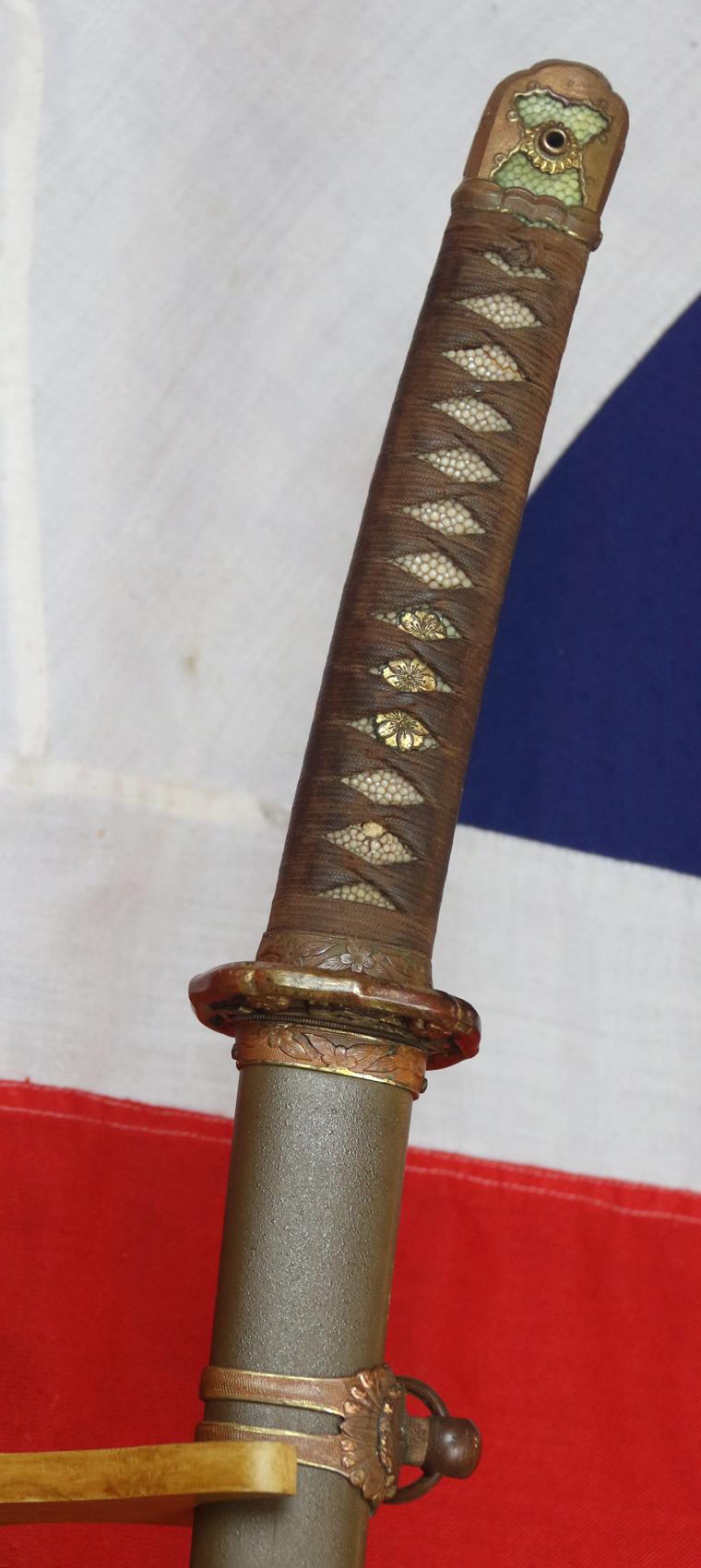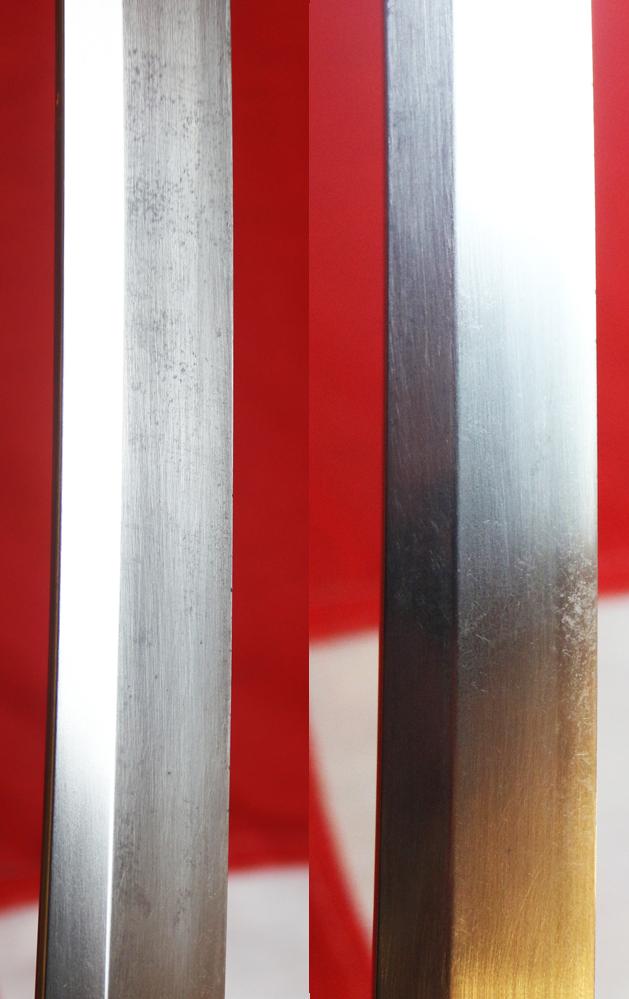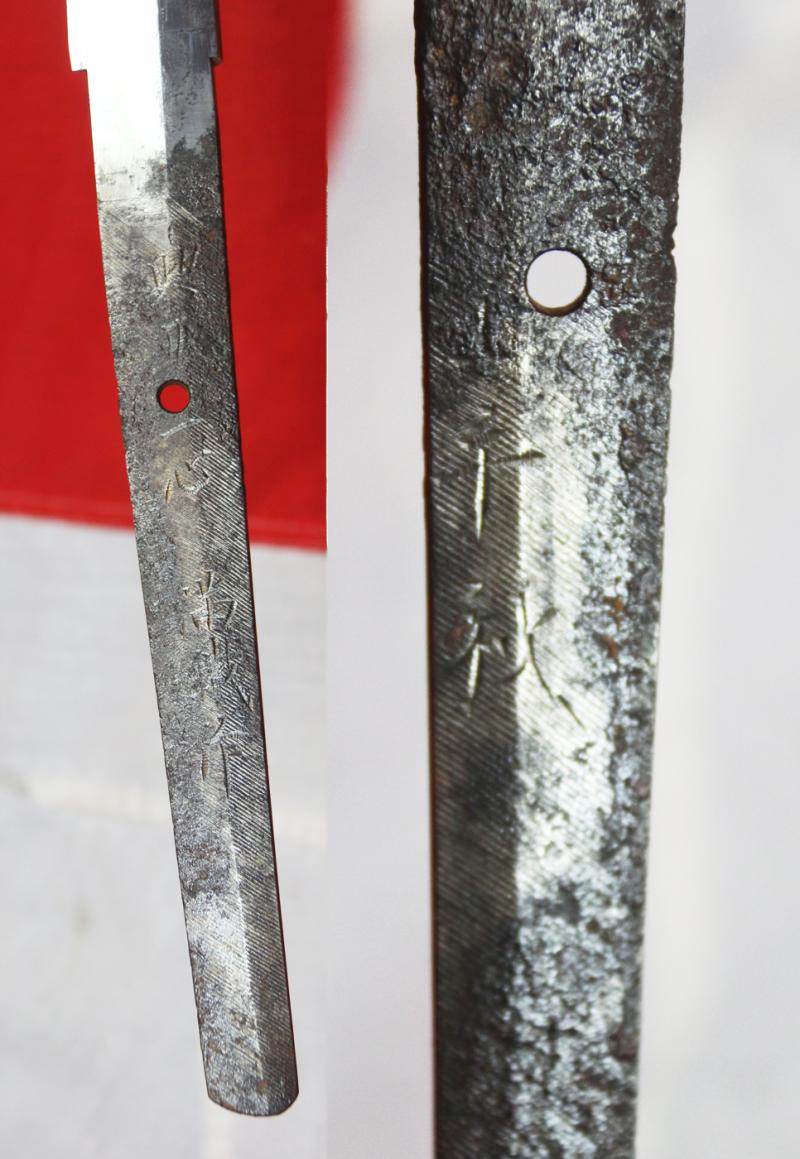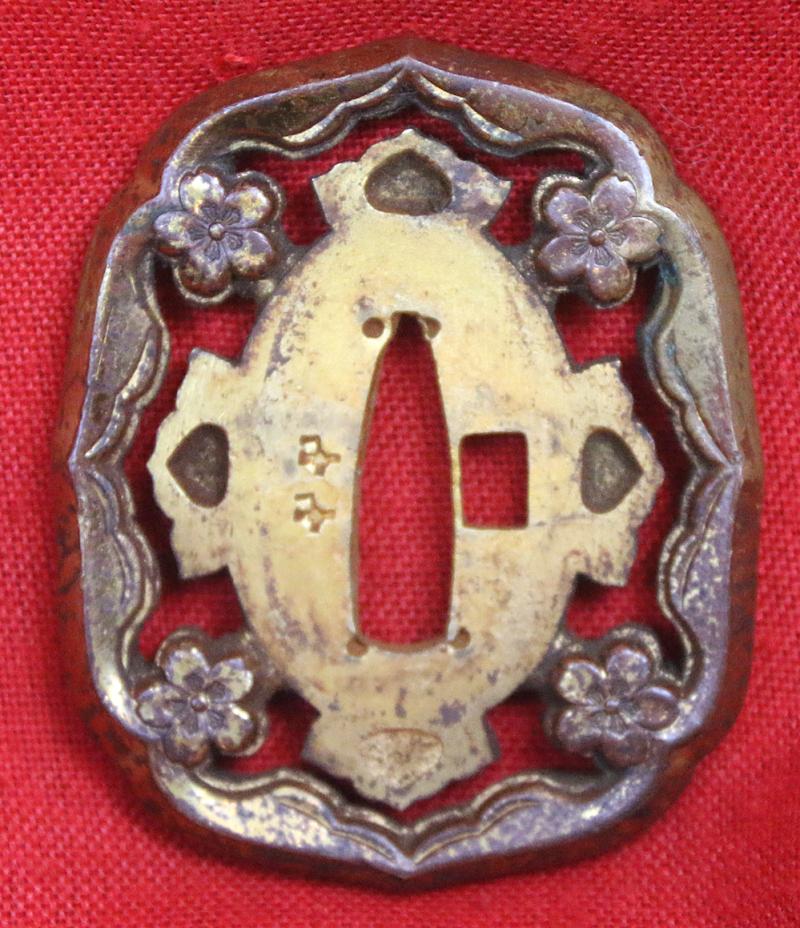A Very Good WW2 Shingunto Signed & Armoury Stamped Imperial Japanese Officer's Sword
All original koshirae mounts and fittings in near mint condition. The blade is signed and dated, and the tang also has a W stamp, which is a scarce armoury stamp that is still classified by Fuller and Gregory as 'unidentified' but often on blades by the smiths Takehisa, Yoshiharu, and also Mantetsu blades.
The blade is in around 65% plus overall original polish with surface staining. It has a good suguha hamon, it could be re-polished to near mint polish once more. We have already spent several hours cleaning the sword removing old surface storage dirt
All the mounts, tsuba, seppa etc bear the original maker mark of the character Schichi, designated to the Arsenal of the manufacturing section of the Tokyo Army Arsenal, second factory of Kokura Army Arsenal, after November 1933
The Shin guntō (new military sword)
The shin guntō (新軍刀, new military sword) was a weapon and symbol of rank used by the Imperial Japanese Army between the years of 1935 and 1945. .
In response to rising nationalism within the armed forces, a new style of sword was designed for the Japanese military in 1934. The shin guntō was styled after a traditional slung tachi of the Kamakura Period (1185–1332). Officers' ranks were indicated by coloured tassels tied to a loop at the end of the hilt. The corresponding colors were brown-red and gold for generals; brown and red for field officers; brown and blue for company or warrant officers; brown for sergeants, sergeants major or corporals. The blades found in shin guntō ranged from modern machine-made blades through contemporary traditionally-manufactured blades to ancestral blades dating back hundreds of years.
Type 94edit
The Type 94 shin guntō (九四式軍刀, kyūyon-shiki guntō) officers' sword replaced the Western style kyu gunto in 1934. It had a traditionally constructed hilt (tsuka) with ray skin (same) wrapped with traditional silk wrapping (ito). A cherry blossom (a symbol of the Imperial Japanese Army) theme was incorporated into the guard (tsuba), pommels (fuchi and kashira), and ornaments (menuki).
The scabbard for the Type 94 was made of metal with a wood lining to protect the blade. It was often painted green/brown and was suspended from two brass mounts {ashi}, one of which was removable and only used when in full dress uniform. The type 98 fittings, improved the design a little and disposed of the fitting and use of the second ashi altogether. The fittings on the scabbard were also decorated with traditional cherry blossom designs. The better quality examples had gilding highlights and embellishments to the mounts {as does this sword, which, remarkably, are all still present}
Code: 24886
1800.00 GBP









